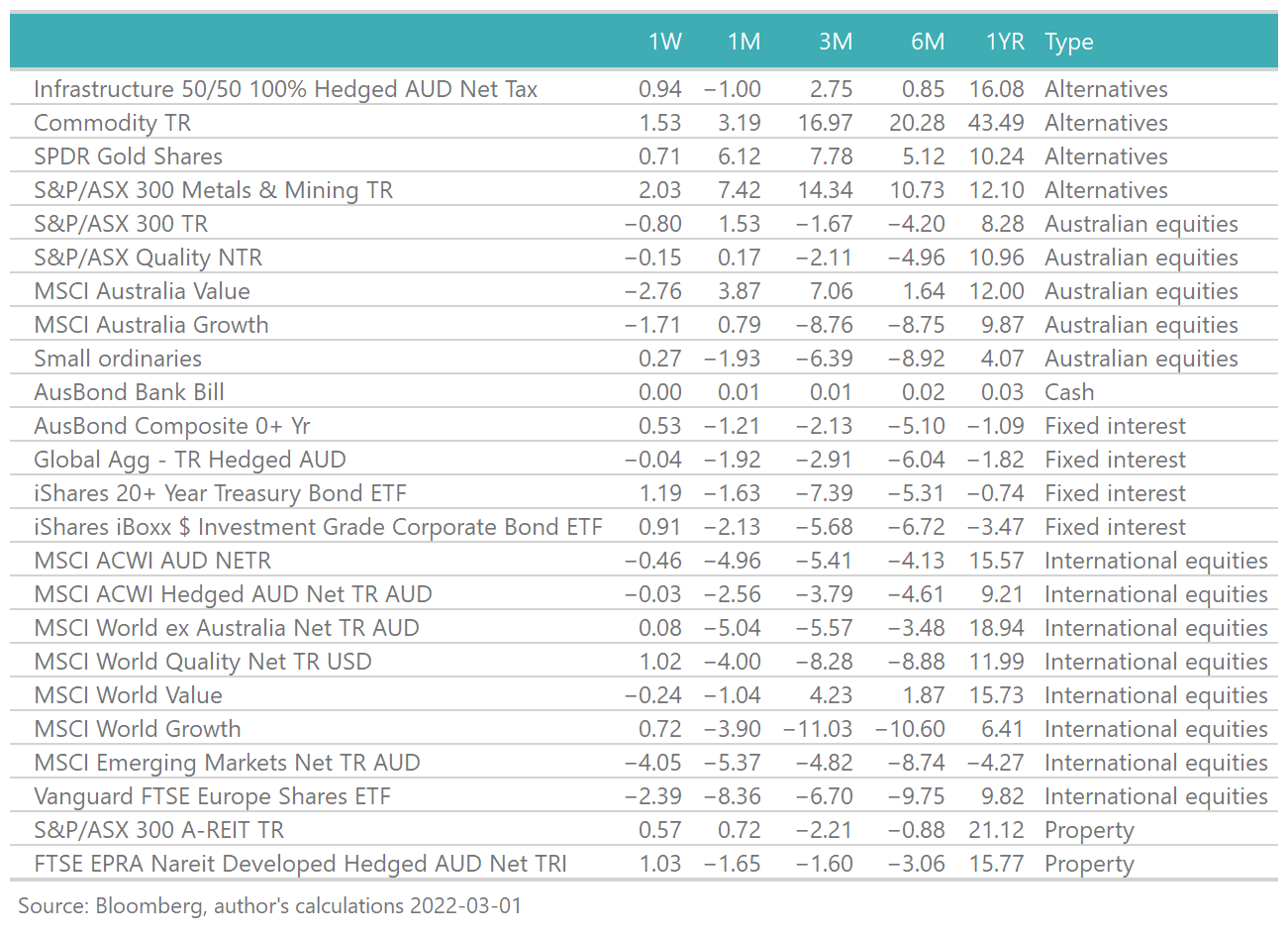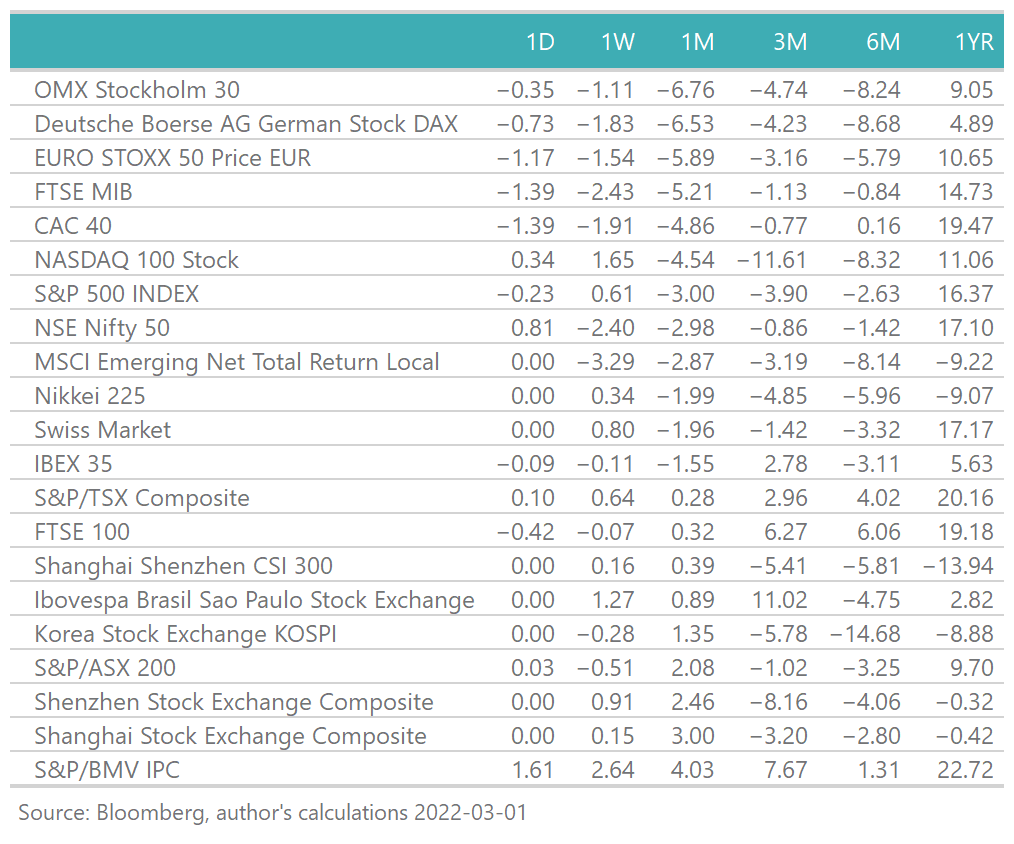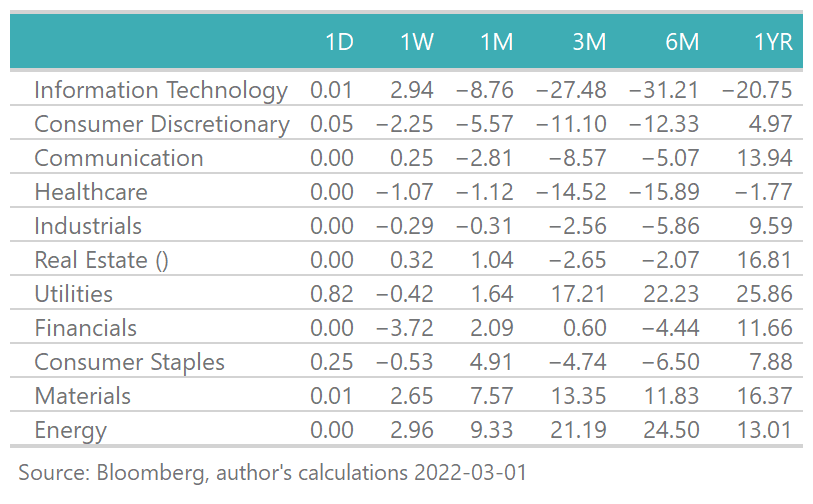Reporting season; all that matters is expectations
Stockmarkets are pretty efficient. That means everything you care to think, or think about thinking, has likely already been thought, and is in the price already.
As a stock picker, you've got to make educated guesses about what will happen, and what you think everyone else thought would happen, hence prediction is hard, especially about the future, as someone clever once said.
With that as our framework, let us consider how reporting season played out.
First, the headlines.
To set the scene, we need to know the big picture.
- How did macro markets play out over the month (e.g. risky assets like equities versus lower volatility assets like bonds)?
- How did factor based strategies play out (e.g. value vs growth vs quality etc)?
- What ASX 200 sectors outperformed (e.g. materials vs tech)?
Armed with those, we can make more holistic sense of the reporting season summary.
So, to table one, macro market and factor strategy returns, shown below.
Value handily outperformed Growth and Quality over the results season month of Feb. Bonds performed poorly, as higher rates equate to lower prices, and commodities, including gold, performed well.

Moving from macro markets to equities more specifically, European equities were hit harder, in a generally down month, on the back of proximity to the Russian invasion of Ukraine.

Moving towards ASX 200 sectors, we can see that information technology and consumer discretionary had a very challenged results season, with materials, energy and staples performing robustly.

With these big picture outcomes cemented in our minds, we can now talk at a more granular level about how or why certain stocks might have beaten (fallen short) of market expectations, which is where the out (under) performance ultimately stems from.
Results season summary
- Value stocks outperforming growth, due to low embedded expectations and a rising rates tailwind (e.g. ABC vs DMP) which negatively impacts secular growth stocks (e.g. XRO)
- Rates beta driving outperformance from the financials that make money on investment income (QBE, SUN) or maturity transformation (banks)
- Commodity price environment even stronger on the back of Russia (WPL, BHP, IPL, AWC), whose exports are predominantly oil and gas, fertiliser, aluminium and wheat. Recall that most investors don't expect commodity prices, or energy prices (oil, LNG, coal), to remain this high, over the medium run, and therefore, each day, each week, each month that they remain elevated effectively creates an earnings upgrade, relative to expectations, and hence outperformance
- Raw material input prices creating challenging working capital issues for some (ANN, Probuild) but not as bad as first feared at the outset of reporting season
- Inventory builds across consumer discretionary (WES, BRG, SUL, CCX, ADH) stocks are a concern, to our mind, as they appear to be extrapolating a level of consumer demand that is unlikely to be sustained as consumption returns to pre-pandemic patterns
- Idiosyncratic variation producing decent earnings beats (WOR, more project wins, MND, project wins + reopening of borders which affects FIFO workers, GEM, higher childcare enrolment enquiries as COVID impacts fade + stock buybacks, VCX, higher cash collections and incrementally improved releasing spreads, TWE, as consumers return to restaurants and lost China share is replaced)
- Pricing power across select non-resource names (BXB, AMC, COL) protecting margins and passing through inflation to end users
- Competitive pressure across the banks remains intense, leading to NIM pressure, and by and large provision write-backs are a “hollow log” well understood by the market, and subsequently priced in
- QGARP tech (IRE) or QGARP defensives (SPK) are appealing in sectors otherwise characterised by generally expensive valuations
- Gold producers (NCM) performing well, despite production issues and rising costs. Arguably, the "surprise" to the market was the strong performance of the gold price, in an environment of rising real yields (normally a material headwind to gold) over the past few months. It is plausible that the "new" news was the pre-emptive purchasing/stockpiling/increase-in-demand-for of gold, in preference to treasury's, ahead of then-prospective sanctions. If so, we would anticipate a weaker gold price when monetised.
Returning to our starting point, for the majority of the stocks mentioned above, the key was how the "new news" stacked up against day before expectations. Domino's (DMP) grew, but same store sales was below the medium to longer term target, and incremental investors weighted the probability of a consumer preference shift (from eating pizza, which we disproportionately did over COVID, to eating anything else, at a restaurant, even another pizza, as long as it wasn't a DMP one).
We've been very bullish oil and gas names (see our previous Livewire articles for many examples), and those expectations have played out quite successfully.
It is now, however, when things appear to be maximally bullish (with everything ranging from tight supply to robust demand, including the risk premia association with sanctions on Russian exports) that we begin to think about how the distribution of risk looks, relative to the ex-ante reward.
As such, we've taken quite a bit of our energy bet off the table, albeit leaving some more modest exposures should prices remain elevated across FY2023.
2 topics
14 stocks mentioned

